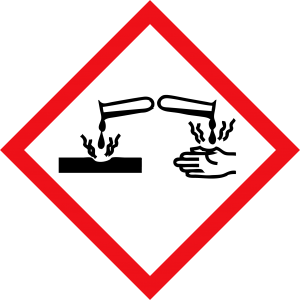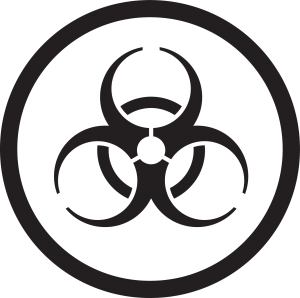The Workplace Hazardous Materials Information System (WHMIS) 2015 Pictograms/Symbols is a vital system designed to ensure the secure handling, storage, and disposal of hazardous substances in Canadian workplaces. The WHMIS 2015 system is based on the Globally Harmonized System of Classification and Labelling of Chemicals (GHS), created by the United Nations.
According to WHMIS regulations, all hazardous materials must be categorized and labelled based on specific criteria, and suitable safety precautions must be established to safeguard workers from potential harm. One of the most crucial components of WHMIS 2015 is the use of symbols and pictograms to notify workers of the potential hazards of the substances they are dealing with.
There are nine WHMIS GHS symbols that indicate various types of hazards, and in this article, we will provide a brief description of each of these symbols / pictorgrams.
The WHMIS GHS Symbols or Pictogram:

Explosive Symbol/Pictogram:
The explosive symbol/pictogram indicates that the material is capable of causing an explosion or a violent reaction. This could be due to the presence of volatile chemicals or unstable compounds.

Flame Symbol/Pictogram:
The flammable symbol/pictogram indicates that the material is capable of catching fire or exploding when exposed to heat or flames. This could be due to the presence of highly combustible chemicals or fuels.

Flame Over Circle Symbol/Pictogram:
This symbol/pictogram recognizes substances with oxidizing properties. These are chemicals that promote combustion or intensify fires, causing them to burn for a longer time and at a higher temperature.

Compressed Gas Symbol/Pictogram:
The compressed gas symbol/pictogram indicates that the material is stored under high pressure and could explode if not handled properly. This could be due to the presence of compressed gases such as propane, oxygen, or nitrogen.

Corroion Symbol/Pictogram:
The corrosive symbol/pictogram indicates that the material is capable of causing damage to living tissue or other materials. This could be due to the presence of strong acids or bases that can dissolve or eat away at surfaces.

Skull and Crossbones Symbol/Pictogram:
The toxic symbol/pictogram indicates that the material is capable of causing serious health effects or even death if it is inhaled, ingested, or absorbed through the skin. This could be due to the presence of toxic chemicals such as pesticides or heavy metals.

Exclamtion Mark Symbol/Pictogram:
The harmful symbol/pictogram indicates that the material is capable of causing less severe health effects such as irritation, nausea, or headaches. This could be due to the presence of chemicals that are not necessarily toxic but can still cause harm if exposure is prolonged or frequent.

Biohazardous Infectious Material Symbol/Pictogram:
The biohazardous infectious material symbol/pictogram indicates that the material contains microorganisms such as bacteria or viruses that can cause disease in humans or animals. This could be due to the presence of biological agents such as blood, saliva, or other bodily fluids.

Environmental Hazard Symbol/Pictogram:
The environmental hazard symbol/pictogram indicates that the material is capable of causing harm to the environment. This could be due to the presence of chemicals that can pollute air, water, or soil, or that can harm wildlife or vegetation.

Health Hazard Symbol/Pictogram:
The Health Hazard symbol on a WHMIS label signifies that a substance is highly dangerous and may cause severe and lasting health problems. These risks could include the development of cancer, reproductive toxicity, and harm to organs from both short and long-term exposure.
The use of WHMIS GHS symbols/pictogram is an important part of ensuring the safety of workers who handle hazardous materials. These symbols provide a quick and easy way to identify the potential hazards of a material and to take appropriate safety measures. By understanding the meaning of each of the nine symbols, workers can protect themselves and their colleagues from harm and ensure that materials are handled and stored safely.



